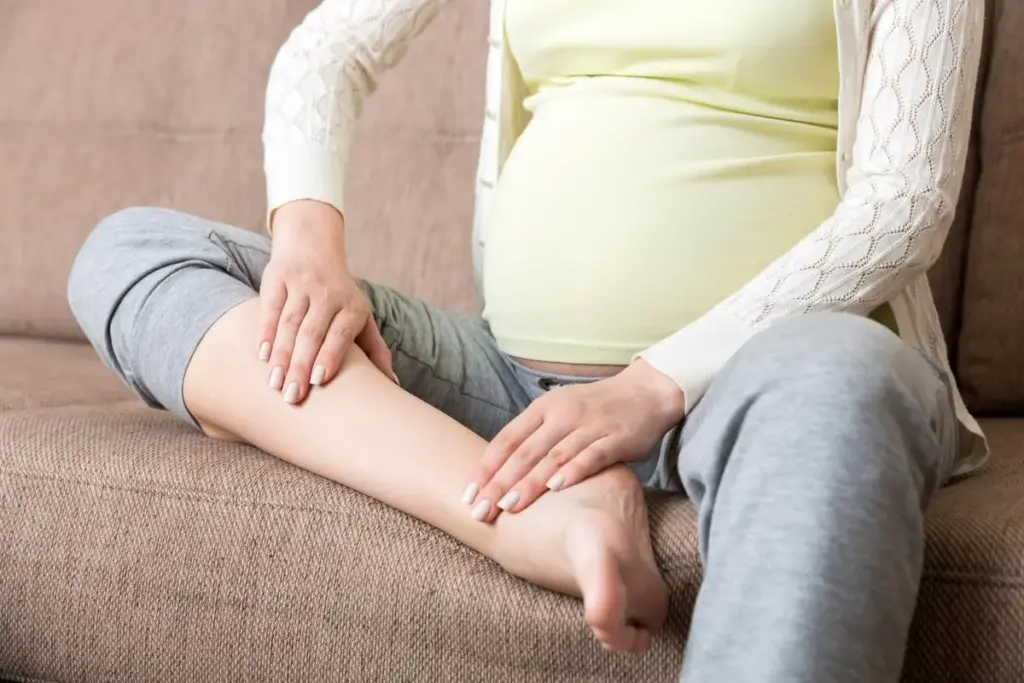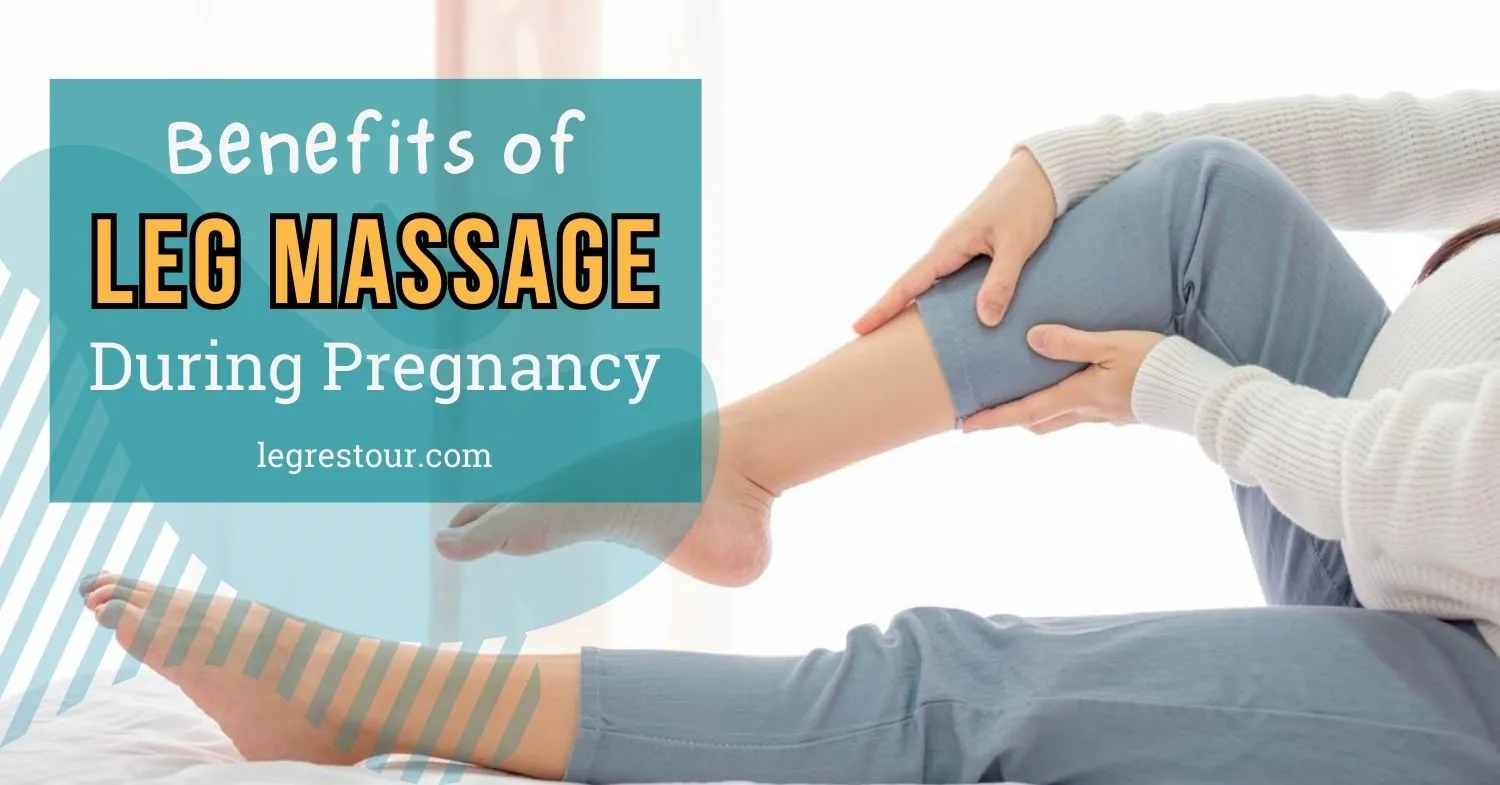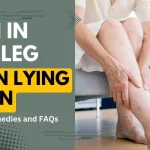Pregnancy is an incredible journey that brings numerous changes in a woman’s body. As the pregnancy progresses, the growing baby puts extra pressure on different body areas, including the legs. The added strain can often lead to discomfort, swelling, and muscle tension, making leg massage a valuable therapeutic practice for pregnant women. This article will explore the benefits of leg massage during pregnancy, precautions to consider, techniques to try, and other remedies for leg discomfort. So, let’s dive in and discover how to give those tired legs the relaxation they deserve!
Leg Massage Benefits of During Pregnancy
Increased Blood Circulation
Throughout pregnancy, hormonal shifts and increased blood volume can lead to reduced circulation, particularly in the lower extremities. Leg massage stimulates blood flow, transporting oxygen and essential nutrients to the muscles and tissues. Improved circulation can also help reduce the risk of varicose veins and blood clots, providing a healthier environment for both mother and baby.
Reduction of Swelling and Edema
Swelling, particularly in the legs and ankles, is a common complaint during pregnancy. Leg massage promotes lymphatic drainage, helping to alleviate fluid retention and edema. By gently manipulating the affected areas, excess fluid can be directed toward the lymph nodes, resulting in reduced swelling and a more comfortable experience.
Alleviation of Leg Cramps and Restless Legs Syndrome
Many pregnant women experience leg cramps and restless legs syndrome (RLS) due to hormonal changes and altered nerve function. Leg massage can relax the muscles, relieve tension, and decrease the frequency and intensity of leg cramps. It also calms the nervous system, easing the discomfort associated with RLS and promoting better sleep.
Relief from Muscle Tension and Pain
Carrying the additional weight of a growing baby can lead to muscle tension and discomfort in the legs. Massage techniques such as gentle strokes, circular motions, and kneading can help release tension, reduce muscle soreness, and alleviate pain. Pregnant women can find relief from the daily stresses placed on their legs by targeting specific muscle groups.
Precautions and Safety Measures
While leg massage can provide benefits during pregnancy, it’s essential to prioritize safety and take necessary precautions to ensure the well-being of both the mother and the baby. Before beginning a leg massage routine, it’s essential to consider the following measures:
- Consultation with a healthcare professional is crucial, especially if you have any underlying health conditions or complications. Always seek guidance from your healthcare provider.
- Selection of a qualified massage therapist: If you seek professional massage services, ensure that the therapist is experienced in prenatal massage and understands the specific considerations and techniques involved.
- Avoidance of deep tissue massage and specific pressure points: Deep tissue massage and certain pressure points are best avoided during pregnancy to prevent any potential harm. Focus on gentle and soothing techniques that promote relaxation and relieve muscle tension.
Techniques for Leg Massage during Pregnancy
Now that we understand the benefits and precautions associated with this, let’s explore some practical techniques you can try at home or with the assistance of a qualified massage therapist.
Gentle Strokes and Effleurage
Begin the leg massage with gentle strokes using the palms of your hands. Apply light pressure and gradually move from the ankle towards the thigh, focusing on one leg at a time. Effleurage, a long gliding stroke, helps warm the muscles and prepares them for deeper massage techniques.
Circular Motions and Kneading
After the initial strokes, use circular motions with your thumbs or fingertips to knead the muscles gently. This technique helps release tension and promotes relaxation. Focus on the calf muscles, working your way up to the thighs. Remember to maintain gentle and comfortable pressure throughout the massage.
Foot and Ankle Rotations
Incorporate rotations into your leg massage routine to alleviate foot and ankle discomfort. Hold the foot with both hands and softly rotate it in a circular motion. Please pay special attention to the ankles, as they often bear the brunt of swelling and tension during pregnancy.
Stretching Exercises
In addition to massage, gentle stretching exercises can further enhance the benefits for your legs. Perform ankle circles, toe flexes, and calf stretches to improve flexibility and relieve muscle tightness. Be cautious not to overstretch and avoid any movements that cause discomfort.
Recommended Oils and Lotions
When selecting oils or lotions for leg massage during pregnancy, it is essential to prioritize natural and safe options. Here are a few suggestions:
- Coconut oil: Known for its moisturizing properties, it provides a smooth gliding surface during massage while nourishing the skin.
- Grapeseed oil: Lightweight and non-greasy, grapeseed oil is a popular choice for massage due to its high vitamin E content and fast absorption rate.
- Sweet almond oil: Mild and hypoallergenic, sweet almond oil is gentle on the skin and offers excellent lubrication for leg massage.
It’s important to remember that certain essential oils should be avoided during pregnancy. Avoid oils such as clary sage, rosemary, basil, and juniper berry, as they can stimulate contractions or cause other adverse effects.

Self-Massage Techniques for Pregnant Women
While professional massage services are beneficial, pregnant women can also perform self-massage techniques at home to relieve leg discomfort. Here are some methods you can try:
Massage Techniques for the Calf Muscles
Sit in a comfortable position with your legs extended or slightly elevated. Apply gentle pressure to your calf muscles using your palms, thumbs, or fingertips. Start from the ankle and move upwards in long, sweeping strokes. Repeat the motion several times, focusing on any areas of tension or soreness.
Massage Techniques for the Thighs
To massage the thighs, position yourself on your side or sit on a chair with your legs bent at a 90-degree angle. Use your palms or knuckles to pressure and knead the thigh muscles in circular motions gently. Gradually work your way up from the knee to the hip area, paying attention to any areas that feel tight or uncomfortable.
Massage Techniques for the Feet and Ankles
Foot massage can provide immense relief to tired and achy feet. Sit on a comfortable chair and place your foot on a cushion or pillow. Use your thumbs to apply pressure and massage the sole of your foot in circular motions. Pay extra attention to the arches and the area between the toes. For the ankles, gently rotate them in both directions and use your fingertips to massage the surrounding muscles.
Tips for a Relaxing Leg Massage
Creating a serene and peaceful environment is essential for a relaxing leg massage experience. Consider the following tips to enhance the ambiance and maximize the benefits:
- Create a calm and comfortable environment: Find a quiet space to relax without distractions. Use soft lighting, and consider dimming the lights or using candles to create a soothing atmosphere.
- Use soothing music and aromatherapy: Play gentle, calming music in the background to enhance relaxation. Additionally, you can use essential oils such as lavender or chamomile in a diffuser to fill the air with a pleasant scent.
- Practice deep breathing and relaxation techniques: Before starting the leg massage, take a few moments to focus on deep breathing and clear your mind. Incorporate relaxation techniques such as mindfulness or guided meditation to enhance the experience.
Frequency and Duration of Leg Massages
Regarding the frequency and duration of leg massages during pregnancy, it is essential to listen to your body’s needs and consult your healthcare provider. Here are some general guidelines to consider:
- Listen to your body’s needs: Pay attention to how your legs feel and adjust the frequency of leg massages accordingly. Some days you may require more frequent massages, while others need less.
- Consistency and regularity: Aim for consistency in your routine to experience the full benefits of leg massage. Even if performed less frequently, regular massages can help maintain muscle relaxation and alleviate discomfort.
- Recommended duration for a leg massage session: A typical leg massage session can last anywhere from 10 to 30 minutes. However, the duration may vary depending on individual preferences and time availability. Remember to focus on quality rather than quantity, ensuring the massage is relaxing and effective.
Other Remedies for Leg Discomfort during Pregnancy
In addition to leg massage, several other remedies can help alleviate leg discomfort during pregnancy. Consider incorporating the following practices into your daily routine:
- Proper hydration and diet: Stay hydrated by drinking adequate water throughout the day. A well-balanced diet rich in nutrients, particularly potassium and magnesium, can also help prevent muscle cramps and promote overall leg health.
- Exercise and movement: Engage in regular low-impact exercises such as walking, swimming or prenatal yoga. These activities encourage blood circulation and strengthen the leg muscles, reducing discomfort and swelling.
- Leg elevation and compression stockings: Elevating your legs above heart level and wearing compression stockings can help reduce swelling and improve circulation. Propose your legs on a cushion or pillow whenever possible to promote blood flow.
Overall, It can relieve the discomfort, swelling and muscle tension often experienced by expectant mothers. By incorporating gentle massage techniques, using safe oils or lotions and practicing self-massage or seeking professional services, pregnant women can find comfort and relaxation for their tired legs. Remember to prioritize safety, consult your healthcare provider and listen to your body’s needs. Soothe those aching legs and embrace the joyous pregnancy journey with the rejuvenating power of leg massage.
FAQs
1. Is leg massage safe during pregnancy?
Leg massage is generally safe during pregnancy. Before starting any leg massage routine, it’s important to consult with your healthcare provider, especially if you have any underlying health conditions or complications. They can provide personalized guidance based on your specific situation.
2. Can I perform a leg massage on myself?
Yes, you can perform a leg massage on yourself. Self-massage techniques can be effective in relieving leg discomfort and promoting relaxation. Follow proper procedures and listen to your body’s feedback to ensure a safe and beneficial experience.
3. How often should I get a professional leg massage while pregnancy?
The frequency of professional leg massages while pregnancy can vary depending on individual needs and preferences. Consult a qualified massage therapist and healthcare provider to determine a suitable frequency that aligns with your pregnancy journey.
4. Can leg massage induce labor?
Leg massage alone is unlikely to induce labor. However, specific pressure points and massage techniques should be avoided to minimize the risk of stimulating contractions. Always seek guidance from a professional massage therapist and consult your healthcare provider.
5. Are there any alternative remedies for leg discomfort during pregnancy?
In addition to leg massage, several alternative remedies for leg discomfort during pregnancy exist. These include proper hydration, exercise, leg elevation, compression stockings, and a balanced diet. Explore different options and find a combination that works best for you.
I think you may like: https://legrestour.com/can-i-get-a-foot-massage-while-pregnant-a-comprehensive-guide



